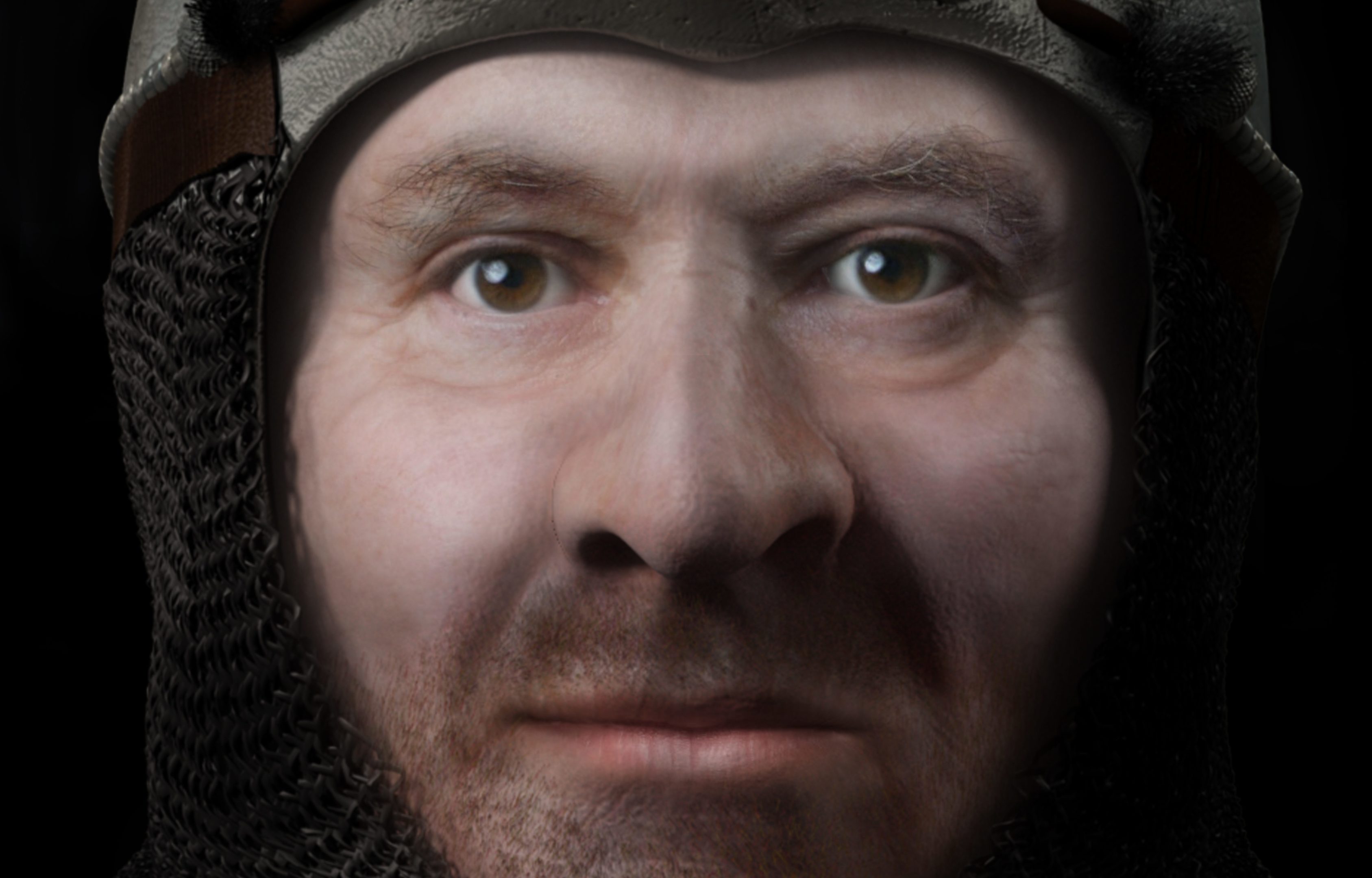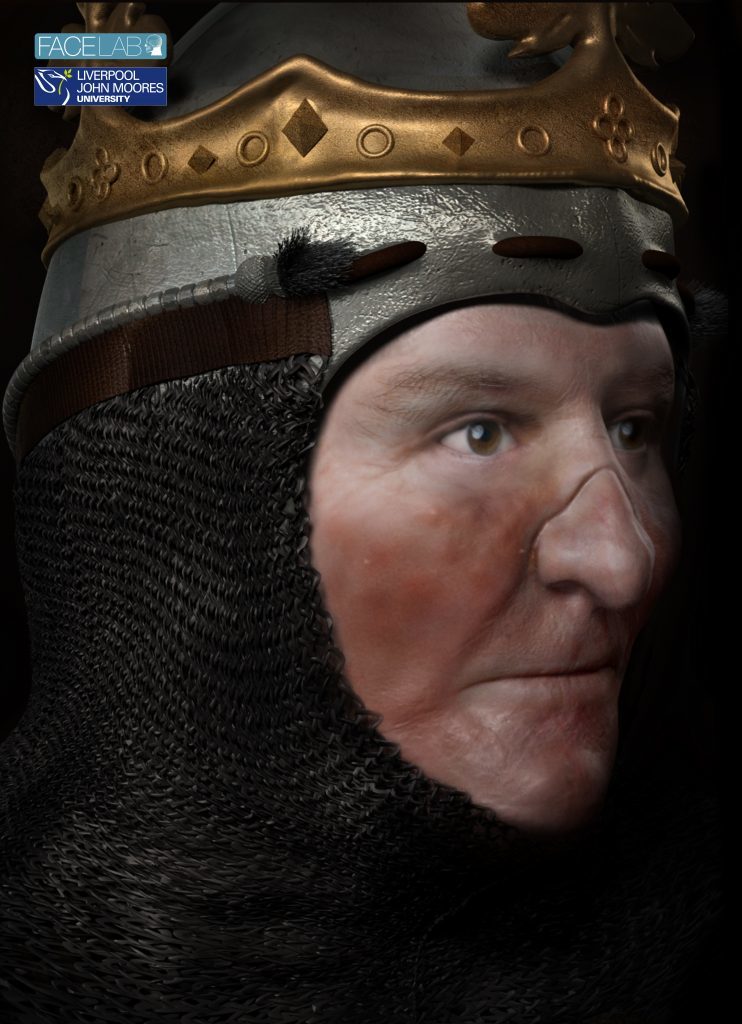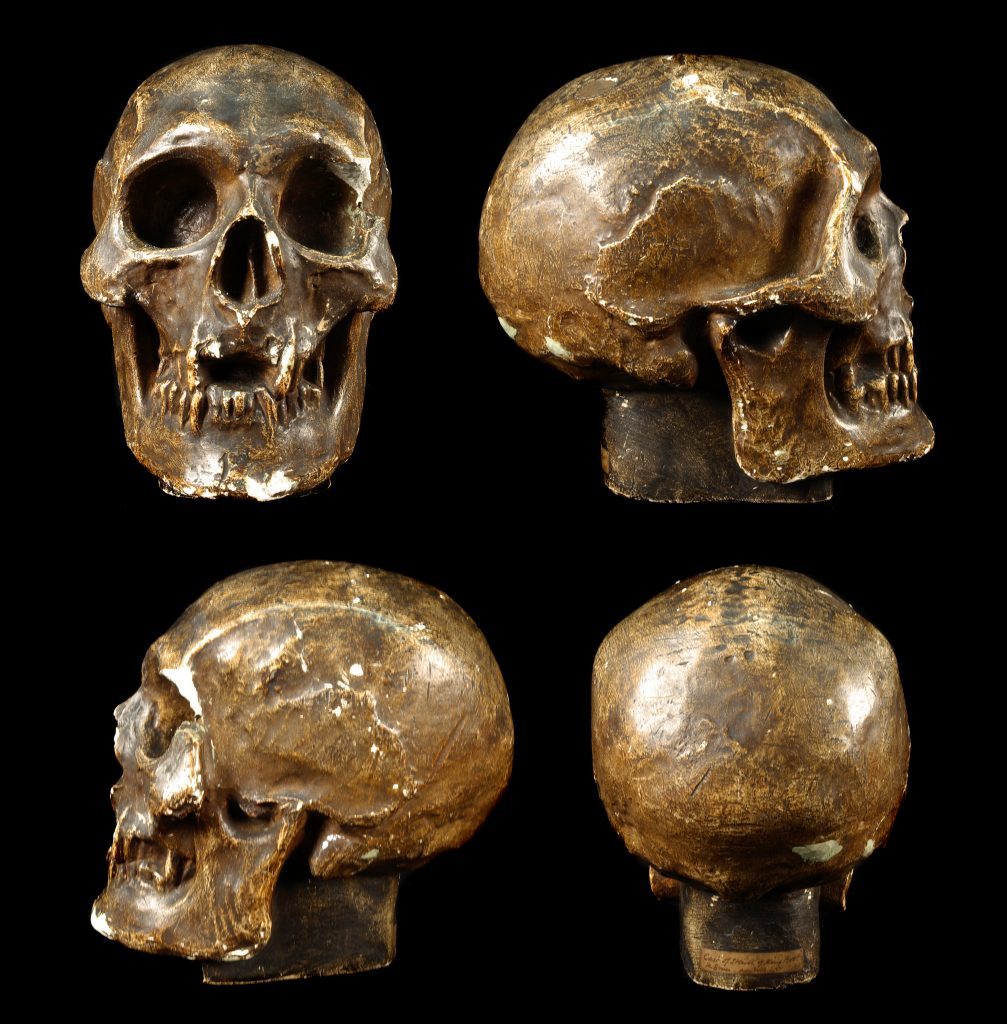
COULD this be the face of Robert the Bruce?
These virtual images have been created by scientists and historians working on a joint project between the University of Glasgow and Liverpool John Moores University.
They’re reconstructed from the cast of the skull of the hero-king of Scots from 1306 to 1329, which is on display at the Hunterian Museum.
There are no reliable visual depictions or written records of Bruce’s appearance from his own time, so this is the closest we can get to what he would have looked like.
One image depicts him in his prime, a large and powerful male head that would have been supported by a muscular neck and stocky frame – a match for the super-athletes of today.
He was a privileged individual, with a first-class diet and a physique that would have equipped him for the brutal demands of medieval warfare.
Bruce was involved in conflict for most of his reign, most famously in the Battle of Bannockburn, but despite his strength as a warrior, disfiguring of the upper jaw and nose show signs that he suffered from an unidentified ailment, possibly leprosy.
He had problems with his health several times, including once in 1327 when he was said to be so weak he could only move his tongue.
Eventually, it is likely that it was leprosy that killed him at the age of 54.
The project to put a face to the Hunterian skull was led by Dr Martin MacGregor, a senior lecturer in Scottish history at the University of Glasgow.
Dr MacGregor was inspired by the discovery of the skeleton of King Richard III of England beneath a car park in Leicester in 2012.
“I was aware of previous attempts to recreate the face of the skull linked to Robert the Bruce,” he said.
“The case of Richard III revealed how far the technology had advanced. I saw an opportunity to apply the technology to the Hunterian skull held here at Glasgow: first to test the credibility of its connection to Bruce, and then to try to add to our knowledge of Scotland’s greatest king.”
Dr MacGregor requested the expertise of Professor Caroline Wilkinson, Director of LJMU’s Face Lab and a world-renowned craniofacial identification expert, to carry out the facial reconstruction.
Professor Wilkinson was also responsible for the facial reconstruction of Richard III.
She said: “Using the skull cast, we could accurately establish the muscle formation from the positions of the skull bones to determine the shape and structure of the face. But what the reconstruction cannot show is the colour of his eyes, his skin tones and the colour of his hair.
“We produced two versions – one without leprosy and one with a mild representation of leprosy.
“He may have had leprosy, but if he did it is likely that it did not manifest strongly on his face, as this is not documented.”
DNA would offer another way to establish hair and eye colour – but there is a problem.
“The skull was excavated in 1818-19 from a grave in Dunfermline Abbey, mausoleum of Scotland’s medieval monarchs,” explains Dr MacGregor.
“After the excavation the original skeleton and skull were sealed in pitch and reburied, but not before a cast of the head was taken.
“Several copies of the cast exist, including the one now in The Hunterian, but without the original bone we have no DNA.”
“The Hunterian also holds a piece of toe-bone said to have come from the same grave, and not returned to it.
“We had hoped to try and obtain DNA from this and test it against a living descendant of Robert the Bruce, but the bone would probably have been destroyed in the process.”
Professor Wilkinson added: “In the absence of any DNA, we relied on statistical evaluation of the probability of certain hair and eye colours, conducted by Dr MacGregor and his team, to determine that Robert the Bruce most likely had brown hair and light brown eyes.”
“There have also been a number of advances in facial reconstruction techniques since previous depictions of this Scottish hero, including better facial feature prediction and more advanced CGI.”
“This is the most realistic appearance of Robert the Bruce to-date, based on all the skeletal and historical material available.”
Ceann an Rìgh (The King’s Head), the documentary following the reconstruction team from start to finish, will be screened on BBC ALBA, December 15 at 8.30pm
READ MORE

Enjoy the convenience of having The Sunday Post delivered as a digital ePaper straight to your smartphone, tablet or computer.
Subscribe for only £5.49 a month and enjoy all the benefits of the printed paper as a digital replica.
Subscribe
